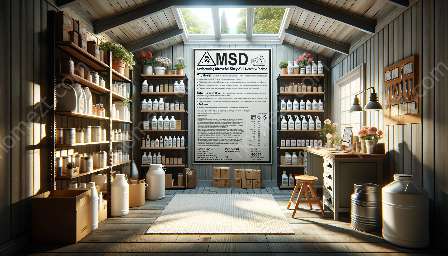Homes often contain a variety of hazardous materials that require special care and attention when it comes to storage. By properly mapping and labeling these storage areas, homeowners can ensure the safe storage of hazardous materials, contributing to home safety and security.
Understanding the Importance of Safe Storage of Hazardous Materials
Safe storage of hazardous materials in homes is crucial for the well-being of the occupants as well as for the preservation of the environment. Improper storage can result in accidents, health issues, and environmental pollution.
Guidelines for Mapping Hazardous Material Storage Areas
Mapping hazardous material storage areas involves identifying and marking the locations where hazardous materials are stored. This process helps homeowners and emergency responders quickly locate and access the materials in case of an emergency.
1. Identify Hazardous Materials: Start by identifying all hazardous materials present in the home, such as cleaning supplies, pesticides, and flammable liquids.
2. Designate Storage Areas: Determine specific storage areas for different types of hazardous materials. For example, flammable liquids should be stored in a well-ventilated area away from heat sources.
3. Create a Map: Draw a floor plan of your home and mark the designated storage areas for hazardous materials. Include details about the types of materials stored in each area.
Importance of Proper Labeling
Properly labeling hazardous material storage areas is essential for ensuring that everyone in the household, including children, is aware of the potential dangers and knows how to handle the materials appropriately.
1. Use Clear and Consistent Labels: Label storage areas and containers with clear, easy-to-understand text and symbols that indicate the type of hazardous materials present.
2. Include Safety Information: Affix labels with important safety information, such as handling instructions, emergency contact numbers, and first aid procedures.
Home Safety and Security Considerations
Mapping and labeling hazardous material storage areas also contribute to overall home safety and security. By being organized and prepared, homeowners can minimize the risks associated with hazardous materials and enhance the safety of their living environment.
Regular Inspection and Maintenance
Regularly inspect and maintain the designated hazardous material storage areas to ensure that containers are intact, labels are legible, and materials are stored according to guidelines.
Education and Awareness
Ensure that all household members, including children, are educated about the hazards posed by the stored materials and the safety measures to follow in case of an emergency.
Emergency Preparedness
Equip hazardous material storage areas with emergency response kits, such as spill containment supplies and personal protective equipment, to effectively handle unexpected incidents.
Conclusion
Mapping and labeling hazardous material storage areas in homes is an essential component of safe storage and home safety and security. By following the guidelines for proper storage of hazardous materials and considering home safety and security considerations, homeowners can create a more secure and prepared living environment.



